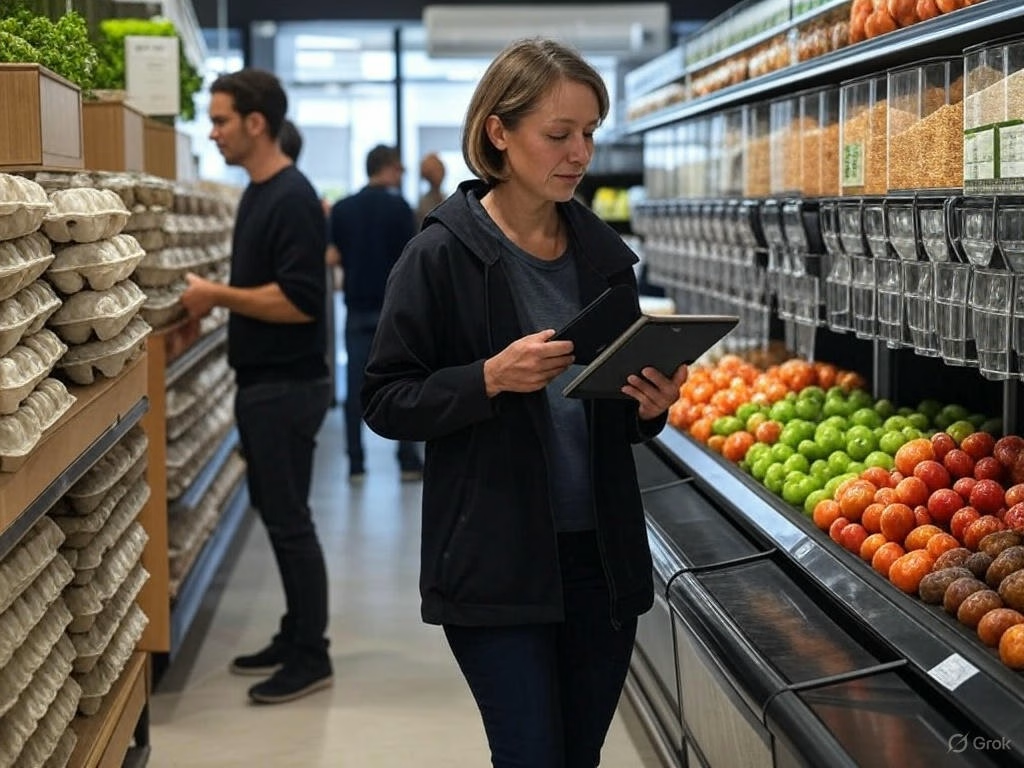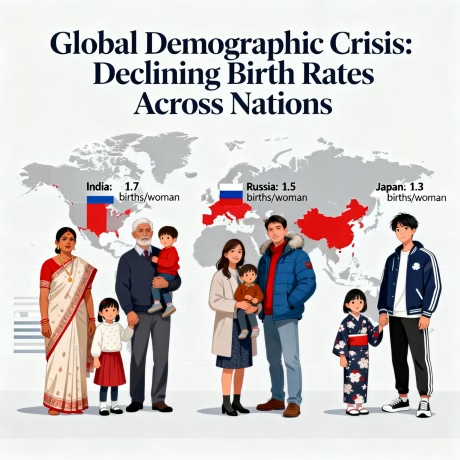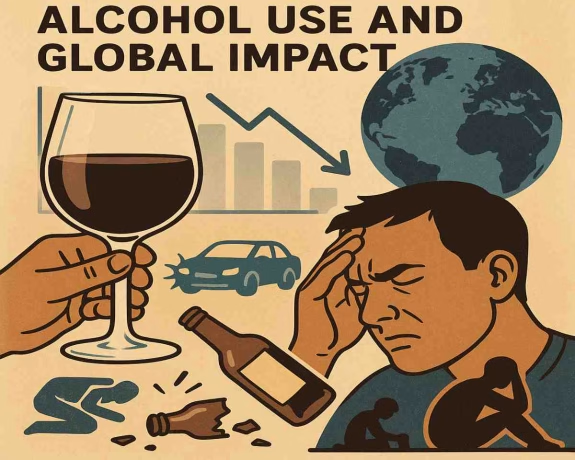
IPTV Desk In 2025, the American food industry is undergoing a seismic shift, propelled by a growing consumer demand for transparency, sustainability, and accountability. At the forefront of this transformation are two standout innovations: restaurants introducing “carbon footprint menus” and grocery chains amplifying sustainable options. These developments, rooted in the urgent need to address climate change and shifting dietary preferences, are not just trends—they’re redefining how we eat, shop, and think about food. As of mid-March, data and real-world examples illustrate a movement that’s gaining traction from coast to coast, promising a greener plate for the future.
“Revolution on Your Plate
The Rise of Carbon Footprint Menus
Picture this: you’re at a restaurant, scanning the menu for your plate, and next to your favorite burger is a number—3.5 kg CO2e. Beside the lentil bowl? Just 0.9 kg CO2e. This is the reality of “carbon footprint menus,” where dishes come with a side of environmental impact data, measured in carbon dioxide equivalent (CO2e) emissions. It’s a concept that’s moved from niche experiments to a burgeoning standard in 2025, driven by diners who want to align their meals with their values.
The idea isn’t new—Panera Bread piloted its “Coolfood Meals” badge back in 2020, certifying low-carbon options with the World Resources Institute. But today, it’s evolving. A 2023 study from the Journal for the Association for Consumer Research found that emission-labeled menus nudged customers toward greener choices, with some restaurants reporting a 15% uptick in plant-based orders. Fast forward to 2025, and chains like Sweetgreen are rolling out digital menus with real-time CO2e scores, updated via supply chain analytics. Scan a QR code, and you’ll see how the beef patty’s emissions stack up against the quinoa salad—transport, farming, and cooking all accounted for on your plate.
In San Francisco, farm-to-table hotspot Greens has taken it further. Their spring menu lists a “climate score” for each dish, factoring in regenerative farming practices. Owner Annie Somerville told reporters, “Our customers want to know the story behind their food—where it’s from, how it’s grown, and what it costs the planet.” The result? A 20% drop in red meat orders since the labels debuted in January, per internal sales data, reshaping what lands on the plate. Across the Atlantic, UK chain Wahaca reports a 9% emissions cut by sourcing “less but better” meat, a model now inspiring U.S. eateries.
Yet, it’s not all smooth sailing. Calculating precise carbon footprints demands granular data—small restaurants often lack the resources, and critics argue the focus on CO2e oversimplifies broader sustainability issues like water use or soil health impacting the plate. Still, the trend is accelerating, with 30% of surveyed U.S. restaurateurs planning to adopt similar labels by year-end, according to a National Restaurant Association poll.
“Sex, Science & Billions: The Untold Truth of the Global Sex Economy”
Grocery Chains Push Sustainable Options
While restaurants rethink menus, grocery chains are reimagining shelves. In 2025, sustainability isn’t just a buzzword—it’s a business strategy shaping your plate. Take Morrisons, a UK retailer making waves stateside through partnerships with U.S. chains like Kroger. Their “carbon-neutral eggs” from hens fed insects instead of soy—a process slashing emissions tied to deforestation—hit American test markets in February. The tech, pioneered by startup Better Origin, turns supermarket food scraps into insect feed, creating a circular system. Early sales data shows a 12% higher uptake than conventional eggs in pilot stores, hinting at a scalable future for the breakfast plate.
Whole Foods, meanwhile, is doubling down on plant-based and low-carbon offerings. Their 2025 “Green Living” campaign features bulk-buy sections to cut packaging waste and a line of carbon-neutral potatoes grown with net-zero methods. Online grocer Thrive Market boasts carbon-neutral shipping for its organic goods, while Imperfect Foods delivers “ugly” produce—edible but cosmetically imperfect—reducing waste and emissions for the home plate. A 2024 study estimated online grocery delivery could cut emissions by up to 65% compared to in-store shopping, a stat fueling these platforms’ growth.
Big players aren’t alone. Regional chains like PCC Community Markets in Seattle are testing AI-driven inventory systems, inspired by Malaysia’s Food Market Hub, to optimize stock and minimize spoilage. PCC’s CEO, Krish Srinivasan, noted a 10% reduction in food waste since implementation last fall. Nationally, the push aligns with industry goals—75% of food sector leaders rank sustainability among their top three priorities, per a DNV report, with giants like Arla cutting dairy emissions by 24% since 1990 through renewable energy and farmer collaborations affecting every plate.
But challenges loom. Sustainable options often carry higher price tags, risking exclusion for budget-conscious shoppers filling their plate. Small suppliers struggle to decarbonize without financial support, and consumer adoption varies—price still trumps planet for 40% of surveyed Americans, per a 2025 Pew Research poll. Even so, the market is responding: the global sustainable food sector, valued at $1.2 trillion in 2023, is projected to hit $2.5 trillion by 2030, growing at a 10.3% CAGR, according to Future Data Stats.
“Men, Women, and Desire: The Top Traits That Spark Instant Attraction”
Trends Driving the Shift
What’s fueling this? First, climate awareness. Food systems account for a third of global greenhouse gas emissions, per the UN, and Americans are waking up to their role. A 2025 NielsenIQ survey found 62% of consumers want brands to reduce their carbon footprint, up from 55% in 2023. Second, tech innovation. Machine learning and supply chain tracing—think Klimato’s carbon-tracking app—make sustainability measurable and actionable. Third, generational pull. Gen Z and Millennials, who’ll drive 60% of food spending by 2030 per McKinsey, demand authenticity and eco-friendly options, shunning brands that don’t deliver.
Social media amplifies it all. On platforms like X, posts about “climavore” diets—eating with climate in mind—are trending, with hashtags like #CarbonMenus and #SustainableEats spiking in early 2025. Influencers showcase low-carbon recipes, while grocery hauls spotlight waste-free buys, reflecting a cultural pivot toward accountability.
The Road Ahead
These innovations aren’t without critique. Carbon footprint menus can be gamed with selective metrics—does that chicken’s score account for feed transport?—and sustainable grocery options must balance cost with scale. Equity remains a hurdle; a $5 carbon-neutral egg dozen won’t feed every family. Yet, the trajectory is clear. Restaurants and grocers are betting on transparency and tech to meet a public hungry for change—literally and figuratively.
By year’s end, expect more. Sweetgreen aims to expand its carbon-label pilot to 50 locations, while Kroger eyes a nationwide rollout of insect-fed eggs if early tests hold. The USDA’s 2025 sustainability grants, up 20% from last year, signal government backing. As Somerville of Greens put it, “This isn’t a fad—it’s the future of food.” In a world racing to curb emissions, 2025’s plate might just be where the battle’s won, one bite at a time.




One thought on ““Revolution on Your Plate: Sustainable Eating Redefines America’s Food Scene””